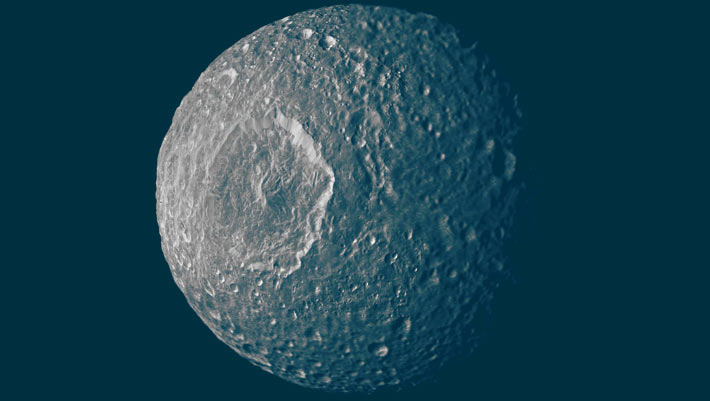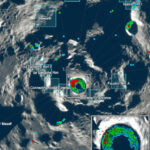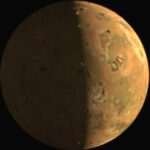From detailed analysis of Mimas’ orbital motion based on data from NASA’s Cassini mission, planetary researchers from Sorbonne Université, Nantes Université, Queen Mary University of London, Université de Franche-Comté and Jinan University show that its heavily cratered icy shell hides a recently formed (less than 2-3 million years ago) global ocean, at a depth of 20-30 km.
Mimas’ surface, like the surfaces of most of the other major Saturnian moons without atmospheres, is not pure ice but contains some dark impurities; the relatively dark markings appear along the lower portion of the walls of the 130-km-wide Herschel Crater (the peak in the middle of the crater is about as tall as Mount Everest; the impact that made it likely almost destroyed the moon) and some of the smaller craters; scientists interpret this darkening as evidence for the gradual concentration of impurities from evaporating icy materials in areas where the dark impurities slide slowly down the crater wall. Image credit: NASA / JPL / Space Science Institute.
Evidence that some moons may have oceans beneath their surface is growing, but the detection of such watery worlds is challenging.
Mimas — the innermost, and smallest (radius = 198.2 km, or 123 miles), regular moon of Saturn — is an unlikely candidate, owing to differences in its surface properties compared with other icy moons, such as Enceladus.
This theory is challenged by Sorbonne Université researcher Valery Lainey and colleagues, who assess observations of the small moon made by Cassini.
Previous research suggested two possibilities for Mimas’ interior: either an elongated rocky core or a global ocean.
The new study reveals changes to the rotational motion and orbit of the small moon that are affected by its interior.
Applying the solid-body model would require the rocky core to be elongated, almost pancake-shaped, which does not match the observations.
Instead, the measurements of Mimas’ position suggest that the evolution of its orbit is better explained as being influenced by an internal ocean.
The researchers calculate that the ocean lies beneath an icy shell approximately 20-30 km deep.
Their simulations suggest that it appeared between 25 and 2 million years ago.
As such, signs of such a subsurface ocean would not have had time to make a mark on the surface.
The results imply that the recent processes on Mimas may have been common in the early stages of formation for other icy worlds.
“Mimas is a small moon, and its heavily cratered surface gave no hint of the hidden ocean beneath,” said co-author Dr. Nick Cooper, a researcher at Queen Mary University of London.
“This discovery adds Mimas to an exclusive club of moons with internal oceans, including Enceladus and Europa, but with a unique difference: its ocean is remarkably young.”
The study was published today in the journal Nature.
_____
V. Lainey et al. 2024. A recently formed ocean inside Saturn’s moon Mimas. Nature 626, 280-282; doi: 10.1038/s41586-023-06975-9




